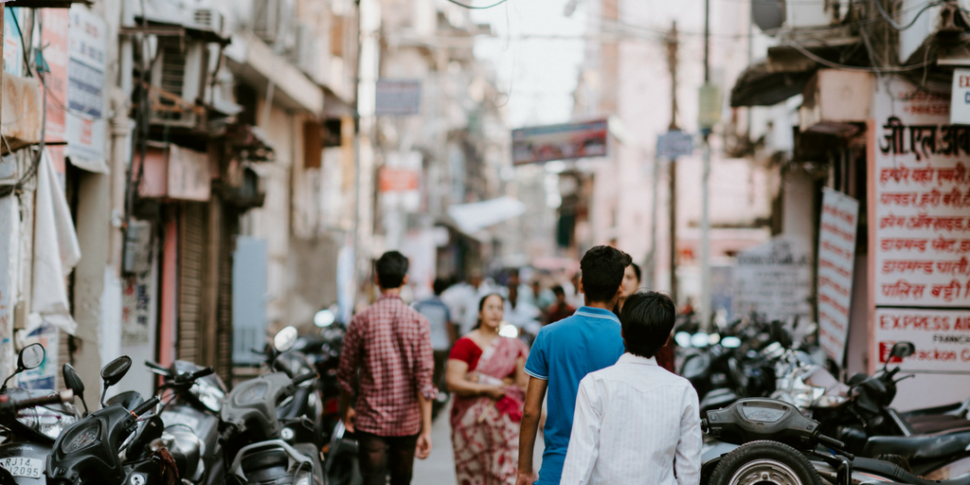As of Saturday morning, June 2, 2018, the population of India was 1,352,795,014, making up 17.74% of the world’s population. In other words, approximately one out of every six people in the world live in India. This is important to consider in this third post of our series exploring the best places to plant churches. (see our first post here and second post here)
The largest religion is Hinduism (over 80%), and second is Islam (over 14% and quickly growing). Around 2.3% profess any kind of Christian religion at the latest count. In 2015, 15.6 million India born individuals were living outside of India, which has been among the world’s top countries of origin for migrants since 1990 when the UN began tracking these figures. Almost half of India’s migrants live in three countries: The United Arab Emirates, Pakistan and the United States. In 2010 the Pew Research Center estimated that while just 2.3% of India’s population was Christian, 19% of the migrant population leaving the country was Christian. At the same time, 14% of the population in India was Muslim while 27% of the Indian international migrant population adhered to Islam.
Asian Indian immigrants who are already Christians need either churches designed specifically for their own languages and cultures, or they need to engage culturally sensitive multi-ethnic churches. Many are young: the median age in India is 27. New churches may be exactly right for them.
Where in North America do Asian Indians live?
In 2016, the US Census Bureau estimated that 666,480 2016 live in California, 358,647 live in New York, and 349,901 reside in New Jersey. However, when considering a Combined Metropolitan Statistical Area, the New York-Newark-Bridgeport, NY-NJ-CT-PA Combined Statistical Area, was largest. It is home to an estimated 679,173 Asian Indians, with over 20 Asian Indian enclaves. The San Francisco Bay Area, Dallas Fort Worth, Atlanta, Baltimore-Washington, Detroit, Houston, Los Angeles and Philadelphia areas have major Indian populations as well. In Canada, 572, 250 people from India live in Toronto, Ontario, and 217,820 live in the Greater Vancouver area of British Columbia. In 2001 Sikhism was the second largest religion in the Greater Vancouver, BC area, comprising 6.8% of the total population. In Abbotsford, near Vancouver, Sikhs made up 13.4% of the population, and in Surrey, BC, Sikhs are 22.6% of the population.
A guided search of table B16001 (Language Spoken at Home by Ability to Speak English for the Population 5 Years and Over) in the US Census Bureau’s FactFinder tool will uncover 2016 information for Indian languages spoken in the 160 largest counties as well as every state. For example, in California in 2016 there were 172,352 Hindi, 45,654 Gujarati, 51,265 Urdu, 134,758 Punjabi, 25,430 Bengali, 48,993 Marathi, 53,600 Telugu, 49,906 Tamil, 29,976 Kannada and Malayalam speakers, mostly from various regions of India. (https://factfinder.census.gov/faces/nav/jsf/pages/guided_search.xhtml)
Sometimes, Asian Indians cluster where their particular groups have found ways to penetrate industries. Gujaratis, for example, own 42% of the US hotel business, and 70% of them have the surname Patel. By the 1990s, 43% of New York City taxi drivers were from India, Pakistan and Bangladesh.
Other Indians move to places like California’s Silicon Valley seeking work in the technology sectors. Some are permanent residents and citizens, others are here on short term, non-resident work visas (H1B visas) offered to persons with specialized work skills. The Canadian government offers visas through the Temporary Foreign Worker Program and the International Mobility Program.
Over 70% of all H1B visa holders in the US are from India. They usually remain from 3-6 years and then return to India. The US cities with companies with the highest number of requests for H1B visa holders are 1) New York, NY; 2) San Francisco, CA; 3) Houston, TX; 4) Chicago< IL; 5) Atlanta, GA; 6) San Jose, CA; 7) Irving, TX; Seattle,WA; Sunnyvale, CA; Dallas, TX. See https://www.myvisajobs.com/Reports/2018-H1B-Visa-Category.aspx?T=WC for the top 200 cities, and click on cities for the number of visa holders requested by which companies. Each of these cities has high Asian India populations.
In Canada, the program works differently, but the provinces where most are employed are Alberta (by far the highest), Ontario, and British Columbia. These temporary non-immigrant visa holders who come in contact with followers of Christ while they are in North America are connected to family and friends in India, and many are going home to India again. The tech hotel owners, cab drivers, department store employees, and restaurant owners are still connected to India, too.
How can new churches in North America that reach out to the Asian Indian population help them not only find Christ, but impact India? How can your experience with them and the choices you make to welcome them begin to engage a nation with one of the least reached populations, where 1 in every 6 people in the world live?
Are you a church planter or considering planting a church?
Join a Learning Cohort Here
Share this Post

